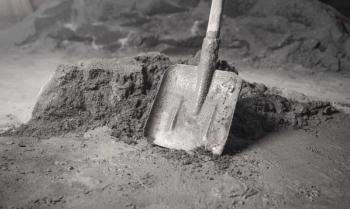
Noureddine Melikechi on Analyzing the Red Planet with NASA’s Mars Science Laboratory
Noureddine Melikechi, dean of the Kennedy College of Sciences at the University of Massachusetts Lowell, discusses his work analyzing spectroscopic data collected by the Chemistry Camera (ChemCam) aboard NASA’s Curiosity Rover.
Noureddine Melikechi, dean of the Kennedy College of Sciences and professor at the University of Massachusetts Lowell, is a member of NASA’s Mars Science Laboratory mission. He helps analyze spectroscopic data collected by the Chemistry Camera (ChemCam) aboard the Curiosity Rover, interpreting the chemical composition of the Martian surface. His research draws on a broad background in atomic, molecular, and optical physics, with a focus on developing techniques for remote spectroscopic analysis.
Spectroscopy spoke with Melikechi about his work with NASA as part of our collaboration with the Society for Applied Spectroscopy in honor of National Space Day.
What insights have laser-induced breakdown spectroscopy (LIBS) measurements from Curiosity or Perseverance provided that were previously inaccessible through other instruments?
LIBS measurements from Curiosity’s ChemCam and Perseverance’s SuperCam have enabled high-resolution, in situ geochemical analyses that were previously inaccessible. On Mars, LIBS provides remotely elemental compositions at sub-millimeter scales. This has revealed the presence of trace elements and fine-scale compositional heterogeneities within individual rocks. These measurements have uncovered evidence of past aqueous alteration and complex sedimentary processes. Combined with the information gained from the other rover instruments, such as the alpha particle X-ray spectrometer (APXS), X-ray diffractometer (XRD), and MastCam high-resolution color imaging system, scientists have gained key insights into Mars' geologic evolution and potential habitability. Beyond the scientific discoveries, the successful deployment of LIBS on Mars has demonstrated its capability and versatility, opening new avenues for research in extreme environments on Earth.
How do you correct for matrix effects in Martian LIBS spectra, especially when dealing with unknown or mixed compositions?
Correcting for matrix effects in Martian LIBS spectra is a challenge. These effects arise because the LIBS signal depends not only on elemental abundances of the target of interest but also on the physical and chemical characteristics of its surroundings, or matrix. On Earth, such effects are often mitigated by using well-characterized reference standards and controlling, as much as possible, experimental conditions. However, on Mars, controlling the experimental conditions poses a real challenge.
To partially overcome this challenge, calibration models based on a variety of well-characterized Earth analog samples are employed. These models, implemented in NASA’s ChemCam and SuperCam instruments, are adapted to Martian data through spectral matching techniques. Another complementary approach leverages machine learning and multivariate analysis techniques to improve calibration and data interpretation. These methods are particularly effective at compensating for matrix effects. An added complexity arises from the geometrical configuration of LIBS measurements. In Earth-based laboratories, it is easier to control the distances between the laser, target, and detector, ensuring more consistent measurements than is possible on Mars.
Can the LIBS techniques developed for Mars be adapted for use in harsh environments on Earth—for example, deep ocean or volcanic regions?
Absolutely. The success of LIBS on Mars, where it operates under extreme conditions including low pressure, temperature fluctuations, high radiation, and remote control, has demonstrated its robustness and adaptability. These make LIBS suitable for challenging environments on Earth. Several research groups have already adapted LIBS for such settings. Teams at the Woods Hole Oceanographic Institution have deployed LIBS to analyze hydrothermal vent fluids in deep-sea environments. Others have used LIBS to study mineral deposits, lava, and ash in active volcanic zones. These efforts show that LIBS can perform in situ chemical analyses in places where traditional sampling and lab-based techniques pose a real challenge. As instrumentation continues to improve, LIBS is poised to become a key tool for real-time elemental monitoring in harsh environments.
Your work spans everything from cancer diagnostics to planetary exploration. What does this breadth say about the versatility—and perhaps even the universality—of LIBS as a scientific tool?
The inherent versatility of laser spectroscopy techniques, such as LIBS, allows our research to make contributions across disciplines, including planetary science and medicine. Whether analyzing Martian rocks or human blood plasma, we are fundamentally studying matter composed of essentially the same atomic building blocks. LIBS allows us to read the elemental composition of these materials. I like to think of atoms as the letters of nature’s alphabet. Just as letters form words and eventually tell us stories, atoms also combine into everything from minerals to living organisms and eventually tell us stories. It is important not only to understand the individual components of a system, but also the relationships between them. Can the elemental makeup of a rock reveal something about the region’s geological history? Can the composition of a drop of blood offer insight into the integrity of an organ? With the increasing use of powerful ML tools in spectroscopy, it is becoming possible to imagine detecting subtle elemental signatures that can help reveal interrelationships. LIBS can play a vital role in this effort.
Newsletter
Get essential updates on the latest spectroscopy technologies, regulatory standards, and best practices—subscribe today to Spectroscopy.





